The Eco-Friendly Home: How to Make the Switch to Sustainable Cleaning
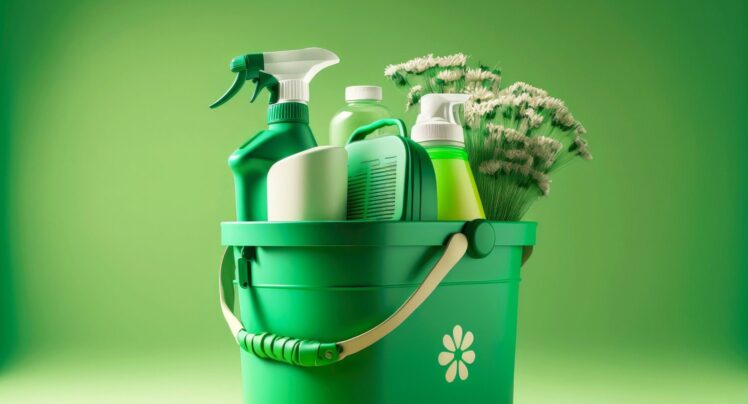
We often talk about sustainability in terms of reducing energy consumption or choosing eco-friendly transportation options. However, sustainable living extends into all aspects of daily life, including how we clean our homes.
You may have often reached for the commercial cleaning products that promise to obliterate germs and leave your surfaces gleaming. But have you ever wondered what’s in those colorful bottles? The truth is that many commercial cleaning products contain chemicals that can be harmful to both your health and the environment.
In this article, we’ll delve deep into how you can switch to sustainable cleaning and make your home not just sparkling clean but also eco-friendly.
Why Sustainable Cleaning Matters
Before delving into the how-to, let’s start by understanding why Sustainable Cleaning Products are important. Commercial cleaning products often contain a range of synthetic chemicals that can be harmful to both human health and the environment. Some chemicals present in cleaning products can cause allergies, skin irritation, and respiratory issues. Additionally, once these chemicals find their way into water systems, they can have a detrimental effect on aquatic life and overall water quality.
Apart from this, consider the plastic waste generated by disposable cleaning products—bottles, scrubbing pads, disposable wipes, and so on. By opting for sustainable cleaning practices, you can significantly reduce both chemical and plastic waste, thus doing your bit for the environment.
The Basics: What You’ll Need
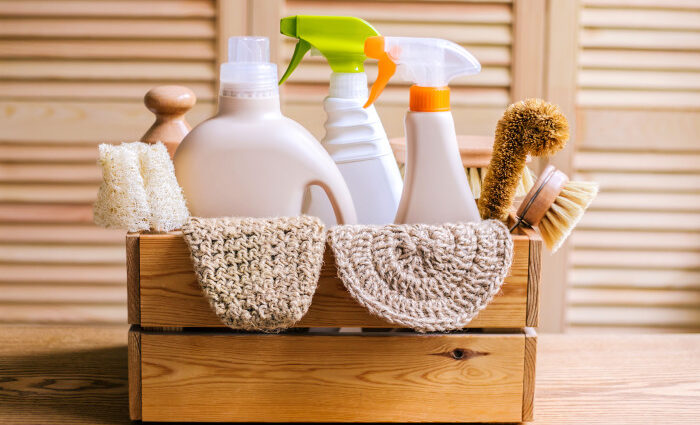
Source: imperial.ac.uk
Switching to eco-friendly cleaning doesn’t mean you need to reinvent the wheel. In fact, most of the items you’ll need are likely already in your pantry or are easily accessible. Here’s a simple list:
- White Vinegar: Excellent for disinfecting and deodorizing.
- Baking Soda: Great for scrubbing and removing stains.
- Lemon: Acts as a natural bleaching agent and leaves a fresh scent.
- Castile Soap: A vegetable-based soap that is biodegradable and gentle on the skin.
- Essential Oils: Add fragrance and additional cleaning power.
- Reusable Cloth or Rags: Eliminates the need for disposable paper towels.
Cleaning the Kitchen
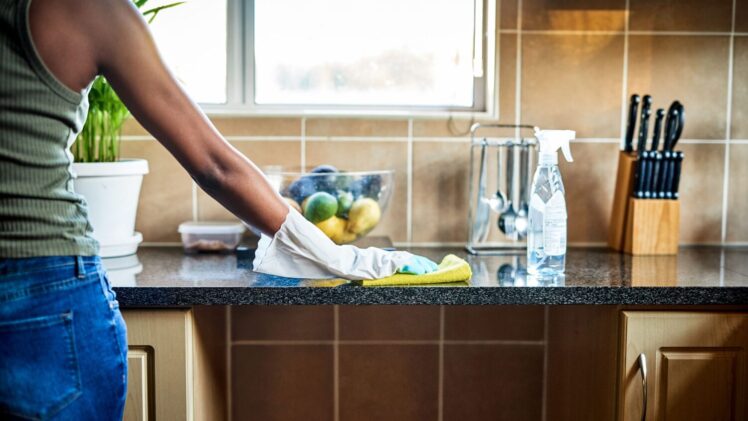
Source: cnn.com
Your kitchen is often the heart of your home, but it’s also a place where spills, stains, and odors frequently occur. Here’s how to tackle them sustainably:
Countertops and Surfaces
- Recipe: Mix equal parts of water and white vinegar in a spray bottle. Add a few drops of essential oil for fragrance.
- Application: Spray the solution on the surface and wipe it down with a reusable cloth.
Ovens and Stovetops
- Recipe: Make a paste with baking soda and water.
- Application: Apply the paste on problem areas and let it sit for a few minutes before scrubbing it off.
Drains
- Recipe: Half a cup of baking soda followed by a cup of vinegar.
- Application: Pour baking soda down the drain, followed by vinegar. Let it fizz and then flush with hot water.
Sprucing Up the Bathroom
The bathroom can be a hotspot for germs, mold, and soap scum. Here’s how to tackle it sustainably.
Tiles and Grout
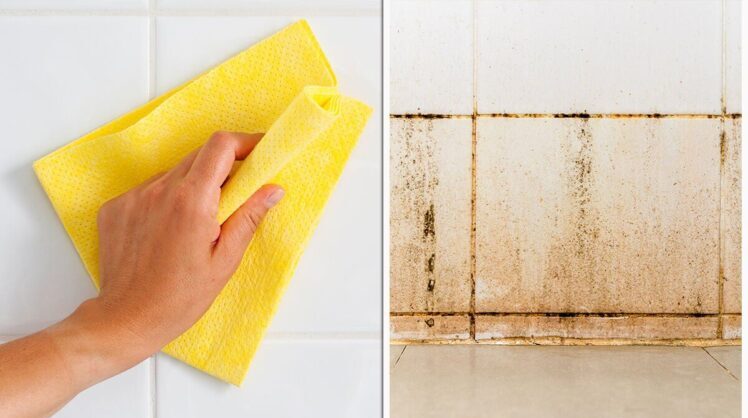
Source: express.co.uk
- Recipe: A mixture of vinegar and baking soda.
- Application: Apply the mixture and scrub with a brush.
Toilet
- Recipe: One cup of vinegar and a couple of tablespoons of baking soda.
- Application: Pour into the bowl and scrub after 15 minutes.
Mirrors and Glass
- Recipe: One part vinegar to three parts water.
- Application: Spray and wipe down with a clean cloth.
Making Floors Shine
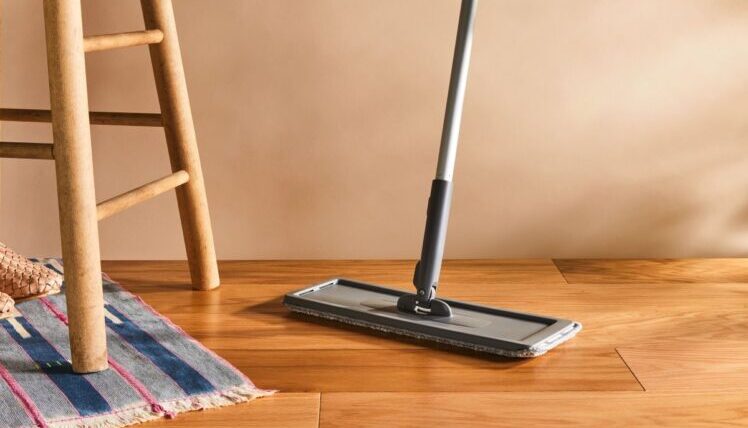
Source: grove.co
Whether you have hardwood floors, tiles, or carpets, there are sustainable ways to keep them clean.
Hard Floors
- Recipe: A gallon of warm water mixed with a cup of vinegar.
- Application: Mop the floor with the solution.
Carpets
- Recipe: Sprinkle baking soda generously.
- Application: Let it sit for an hour before vacuuming.
Additional Tips
- Bulk Purchase: Buy your basic supplies in bulk to save money and reduce packaging waste.
- Labeling: Always label your DIY cleaning solutions to avoid any confusion.
- Storage: Store your cleaning supplies properly to prolong their effectiveness and safety.
In case your flooring is due for replacement, read our guide and discover low-cost flooring hacks that will help you elevate your space to the next level while being within the budget.
FAQs
Can I use apple cider vinegar instead of white vinegar for cleaning?
Yes, apple cider vinegar can be a suitable alternative to white vinegar for some cleaning tasks. However, it is generally less acidic than white vinegar and has a stronger scent, which may not be ideal for all applications. White vinegar is usually recommended for cleaning due to its higher acidity and less intrusive smell. If you do opt for apple cider vinegar, it might be more suitable for jobs that don’t require strong disinfecting properties.
Are essential oils safe to use around pets?
While essential oils can add a pleasant aroma and additional cleaning power to your homemade cleaning solutions, they can be harmful to pets if ingested, inhaled in large amounts, or come into contact with their skin. Some oils, like tea tree, eucalyptus, and citrus oils, are particularly toxic to cats and dogs. If you have pets, it’s best to consult your veterinarian before using essential oils in your cleaning products.
What can I use for cleaning if I’m allergic to baking soda?
If you’re allergic to baking soda, you can consider alternatives like cornstarch for tasks that require mild abrasion. For deodorizing, activated charcoal can be an effective substitute. Some people also use borax as an alternative to baking soda, although it’s essential to handle borax carefully and keep it out of reach of children and pets.
How do I disinfect natural sponges or brushes used for cleaning?
Natural sponges and brushes can be disinfected by soaking them in a solution of one part vinegar to nine parts water for at least an hour. You can also add a couple of drops of an antimicrobial essential oil like tea tree or lavender to boost the disinfecting properties. After soaking, rinse them thoroughly and allow them to dry completely before the next use.
Can I make a sustainable cleaning solution that also acts as a pest repellent?
Yes, you can. Peppermint, eucalyptus, and citronella essential oils are known for their pest-repelling properties. You can add a few drops of any of these oils to your vinegar and water cleaning solution. However, it’s crucial to note that while these solutions may deter some pests, they are not a replacement for a dedicated pest control solution.
Are there any eco-friendly commercial cleaners available if I don’t have time to make my own?
Absolutely, there are numerous commercial cleaners available that are eco-friendly and made with natural ingredients. Brands like Seventh Generation, Ecover, and Method offer a range of cleaning products that are biodegradable and free from harmful chemicals. These are great options for those who may not have the time or inclination to make their own cleaning solutions but still wish to make an eco-friendly choice. Always read the labels carefully to ensure the product meets your specific needs and eco-friendly standards.
Final Words
Making the switch to sustainable cleaning is not only good for the environment but also for your health and wallet. With ingredients commonly found in your pantry and reusable supplies, you can effectively clean your home without resorting to harsh chemicals and single-use plastics. It’s an easy yet impactful way to contribute to the well-being of our planet. So go ahead, make the switch and clean your home the sustainable way.





